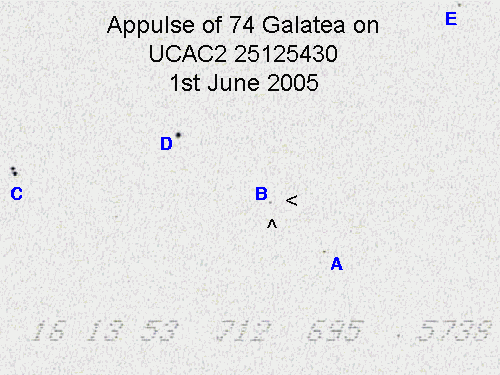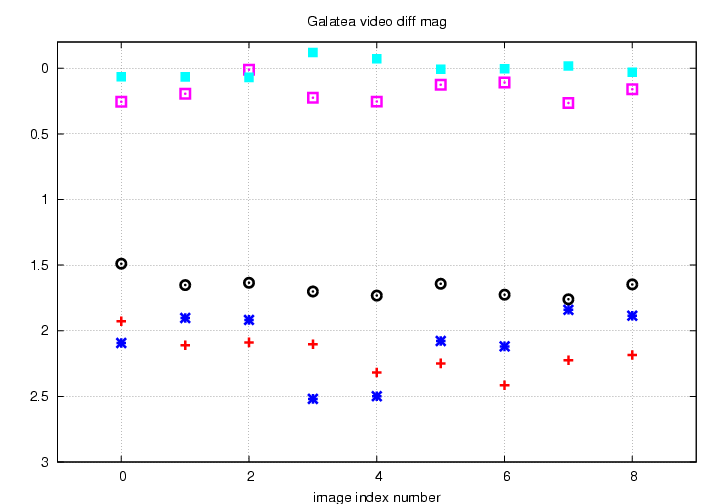
 Copyright © Michael Richmond.
This work is licensed under a Creative Commons License.
Copyright © Michael Richmond.
This work is licensed under a Creative Commons License.
On 2005 June 1, the asteroid (74) Galatea came close to the star UCAC2 25125430. You can read more of the details at RASNZ Occultation Section's page describing the event.
Dave Gault acquired a video recording of stars in the field at the predicted time of the event. It appeared that the target star dimmed in a single frame or two ... but was it real, or scintillation noise? Several people mentioned that a nearby star also dimmed at about the same time -- implying that the target's dimming was due to the Earth's atmosphere.
I decided for fun to make a light curve of the objects in the field so that people could make a decision based on some more quantitative information.
The chart below shows letters I attached to each of the objects in the field for reference. Object "B" is the target star.

I measured the light from each object through a circular aperture of radius 3 pixels, and subtracted the local sky measured in an annulus with inner and outer radii of 10 and 20 pixels, respectively. I then ran those raw instrumental magnitudes through my ensemble photometry package to find the best-fit offsets between the images. The resulting light curves are shown below:

Based on this information, I believe that the evidence for an occultation is weak. It would be nice to have a longer stretch of data, in order to gain better statistics on the random fluctuations in brightness of stars like the target, though.
 Copyright © Michael Richmond.
This work is licensed under a Creative Commons License.
Copyright © Michael Richmond.
This work is licensed under a Creative Commons License.